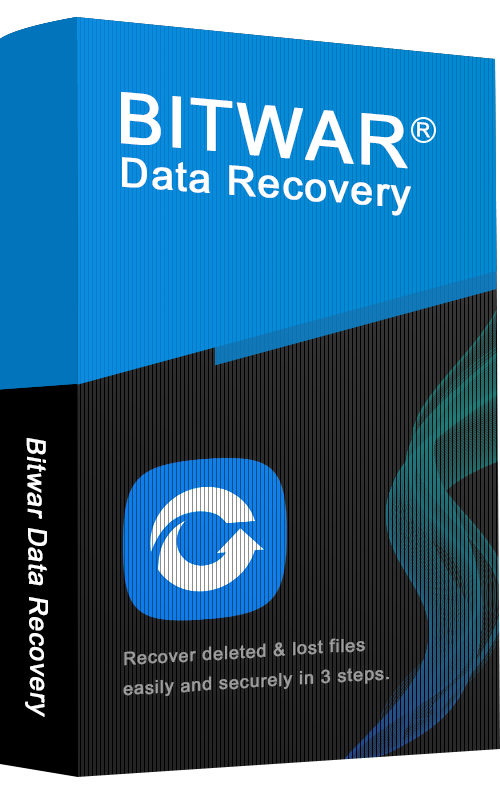3 Simple Ways to Enable NTFS on Mac Device
Table of Contents
Introduction of NTFS on Mac
NTFS-(New Technology File System) is a built-in system that helps mac users to read NTFS files and write access restrictions on the files. Besides, it has a hidden option that allows users to write support to NTFS formatted drives, but it requires high-level expertise to operate.
If any accidental error happens whole writing, the support will cause wrong actions and lead to bad results that will damage your Mac device. Moreover, Apple has not considered the hidden option to be a trusted platform. It is just an experimental utility for Mac users to transfer data between Windows and Mac operating systems.
Aside from all the risks that might cause data loss or damage to the NTSF drive, many Mac users still insist on getting full read and write support access. So if you are one of the Mac users who need to enable NTFS on Mac, we strongly recommend you perform a data backup first for all of your important data.
3 Simple Ways to Enable NTFS on Mac
We will show you three easy ways to enable NTFS on your Mac with different types of command lines.
Method 1: Drive UUID
Drive UUID is the best way to enable NTFS, but it can be a little complex compared to the second method, drive name.
Step 1: Connect the NTFS drive and access UUID by computing the command: diskutil info/Volumes/DRIVENAME | grep UUID (Remember to replace the DRIVENAME with your own drive name.)
Step 2: Type the command: “UUID=ENTER_UUID_HERE none ntfs rw,auto,nobrowse” >> /etc/fstab’ that will String the UUID result to Append the NTFS read or write support.
Step 3: Sometimes, the NTFS drive will not appear by default on your Mac, so you can retrieve it by accessing the folder at Finder from the /Volumes/ directory with the command: ‘open /Volumes‘
Step 4: Instead, you want to see the drive on your system, type the command: ‘sudo ln -s /Volumes/DRIVENAME ~/Desktop/DRIVENAME‘
Method 2: Drive Name
Suppose that the drive UUID is not effective; you can use the drive name to enable NTFS on Mac.
Step 1: Add NTFS write support by typing the command: ‘sudo echo “LABEL=DRIVE_NAME none ntfs rw,auto,nobrowse” >> /etc/fstab‘ with the name of the Windows drives.
This method works together with the Sudo command, so you will need to input your admin password when executing the command. Moreover, it depends on the drive name at the end of the /etc/fstab file as /etc/, so it will need the superuser access to write the files in the file directory.
Suppose that the drive name is quite complicated; you can rename the NTFS drive in Windows first before mounting it with the writing support.
Step 2: Look through the /Volumes/ for the mounted Windows NTFS drive that had the read and write support. You can create a link on your OS X desktop by accessing the command: ‘sudo ln -s /Volumes/DRIVENAME ~/Desktop/DRIVENAME && open ~/Desktop/DRIVENAME‘ to access the NTFS drive that is mounted already.
Method 3: FUSE Application
Step 1: Go and download the FUSE and make sure to use the Default Option during installation. Then it will require Apple’s command-line developer tool to continue the operation.
If you don’t have the tool on your Mac, then go to Finder > Applications > Utilities to run the command: ‘xcode-select –install‘ and install the tools.
Additionally, you need to install the Homebrew package manager and type the command: ‘/usr/bin/ruby -e “$(curl -fsSL https://raw.githubusercontent.com/Homebrew/install/master/install)‘ at the Terminal window and press Enter. Then, enter your user password, and the installation will start automatically.
Step 2: When the Homebrew installation is complete, at the Terminal window, change the command: ‘brew install ntfs-3g‘ to Install ntfs-3g.
Step 3: Type the command: ‘sudo mkdir /Volumes/NTFS‘ to manually mount the read and write mode in the NTFS partition.
Step 4: After you attach the drive to your Mac, execute the command line: ‘diskutil list‘, and a list of disk partitions will appear.
Step 5: Check the partition at the Windows_NTFS file system to search for the NTFS partition which will state /dev/disk3s1.
Step 6: If the NTFS partition is mounted to your Mac automatically, you need to unmount it by replacing /dev/disk2s1 with sudo umount /dev/disk2s1.
Step 7: You need to mount the drive by executing the command: ‘sudo /usr/local/bin/ntfs-3g /dev/disk2s1 /Volumes/NTFS -olocal -oallow_other‘ and replace /dev/disk2s1 with your NTFS partition name.
Learn to Enable NTFS Now!
After learning the three effective ways above, you should be able to enable the NTFS on Mac easily! Bear in mind that all these ways are complicated and require a high computer knowledge level to execute the command.
Any minor mistakes can end up damaging your NTFS drive or permanent data loss. Therefore please operate the methods above with pro assistance or use FUSE to do the task!
Previous Article
What’s New in Bitwar iPhone Data Recovery V1.6.2.2 Summary: The text below will let Mac users understand the NTFS file system and three simple ways to enable NTFS on...Next Article
How to Fix This Memory Card Cannot Be Used Summary: The text below will let Mac users understand the NTFS file system and three simple ways to enable NTFS on...
About Bitwar Data Recovery
3 Steps to get back 500+ kinds of deleted, formatted or lost documents, photos, videos, audios, archive files from various data loss scenarios.
Learn More
